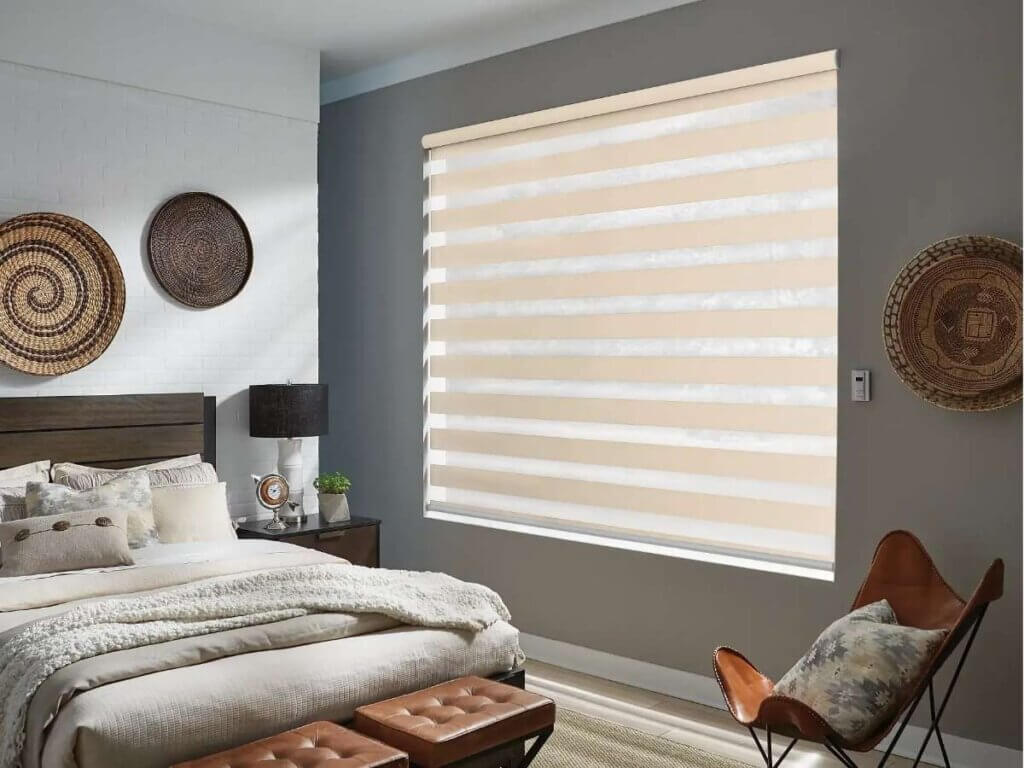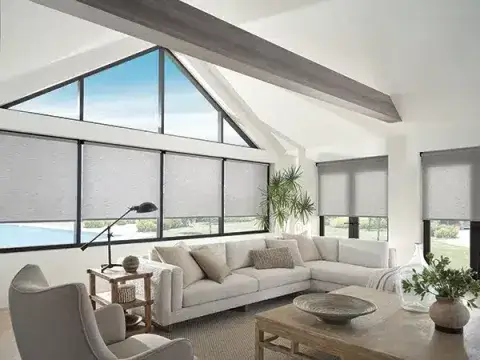Does your Millville home feel too bright in the summer or too chilly in the winter? Maybe you’ve tried basic curtains, but they just don’t offer the light control, privacy, or style your space needs. If you’re considering new window treatments, you’ve likely come across two popular options: shades vs shutters. Both offer distinct advantages, but the best choice depends on your lifestyle, design goals, and budget.
In this guide, we’ll compare shades and shutters to help you make an informed decision—so your home not only looks better but feels better too.
Understanding the Basics of Shades and Shutters
Before diving into the benefits, it helps to understand the basic differences between these two window covering options.
What Are Shades?

Shades are fabric-based window coverings that come in a wide variety of styles, colors, and opacities. From cellular and roller shades to Roman and woven wood styles, they offer softness and flexibility in room design and light control.
What Are Shutters?

Shutters are solid, usually made from wood or composite materials, and are mounted directly to your window frame. Known for their timeless look, they add architectural interest and long-term value to your Millville home.
Shades vs Shutters: A Detailed Comparison
Let’s break it down by the features that matter most to homeowners.
1. Style and Aesthetic Appeal
- Shades: Available in endless fabrics and colors, shades are incredibly versatile. Whether your home decor leans modern, traditional, or coastal, there’s a shade to complement it. They bring softness to a space and can be either bold or minimalist.
- Shutters: Shutters, on the other hand, make a statement. Their clean lines and structured appearance add a polished, high-end feel to any room. They’re ideal for highlighting architectural details or adding curb appeal from the outside.
Verdict: Choose shades for customization and warmth. Go with shutters for structure and timeless elegance.
2. Light Control and Privacy
- Shades: With options like light-filtering and blackout fabrics, shades give you tailored control over natural light. Motorized or cordless versions allow for effortless operation.
- Shutters: Their louvers can be adjusted to control both light and airflow, offering excellent privacy without sacrificing sunlight.
Verdict: Shutters offer better precision, but shades provide softer, more nuanced filtering options.
3. Energy Efficiency and Sound Dampening
- Shades: Especially cellular or honeycomb styles, shades trap air in their pleats to create a thermal barrier, helping to improve your living space comfort and lower energy bills.
- Shutters: While also good insulators, shutters are generally better suited to maintaining consistent interior temperatures year-round due to their solid construction.
Verdict: Both enhance energy efficiency, but shades—particularly cellular ones—are often better for sound dampening.
4. Durability and Maintenance
- Shades: Depending on the material, shades can last many years with proper care but may be more prone to damage in high-traffic areas or homes with pets.
- Shutters: Built to last, shutters are typically more durable and easy to clean—especially composite varieties that resist moisture and warping.
Verdict: Shutters win for durability and ease of maintenance.
5. Cost and Long-Term Value
- Shades: Typically less expensive upfront, shades are a good choice for those working within a tighter home improvement budget. They also offer excellent value when customized properly.
- Shutters: While more of an investment, shutters can increase your home’s resale value and are considered a permanent fixture.
Verdict: Shades are more budget-friendly; shutters offer better return over time.
Choosing the Right Option for Your Millville Home
Every home is different, and the “right” choice often comes down to your goals for style, functionality, and comfort.
- Want a softer, flexible look with lots of design options? Go with shades.
- Looking for structure, longevity, and visual impact? Opt for shutters.
Some Millville homeowners even combine both—shades for bedrooms or media rooms and shutters in main living areas or kitchens. This layered approach ensures every room gets exactly what it needs in terms of aesthetics and performance.
FAQs About Shades vs. Shutters
1. Can I use shades and shutters together in the same home?
Absolutely. In fact, combining the two can provide both functionality and visual interest. For example, you might install shutters in the living room for a polished look and use blackout shades in bedrooms for optimal sleep conditions.
2. Which option is more pet- or child-friendly?
Shades with cordless or motorized features tend to be safer for homes with children and pets. However, shutters with no hanging cords are also a solid, durable option that stands up to wear and tear.
3. How long does professional installation take?
Installation time varies depending on the number of windows and the type of window treatments selected. Shades can often be installed within an hour or two, while shutters may take longer due to their custom fit and structure.
Final Thoughts: Making the Right Window Treatment Choice
Choosing between shades vs shutters isn’t just a style decision—it’s about how you live in your home.
Are you trying to manage light in your south-facing rooms? Do you need easier upkeep in a busy household? Or maybe you’re looking for a statement piece that boosts curb appeal and stands the test of time. Whether you lean toward the soft elegance of shades or the bold presence of shutters, the right window treatment can enhance your Millville home in ways that go far beyond appearances.
Contact Made in the Shade Eastern Shore for a complimentary in-home consultation. Our team will help you compare your window fashion options, measure your windows, and recommend the best solution tailored to your lifestyle and decor.


